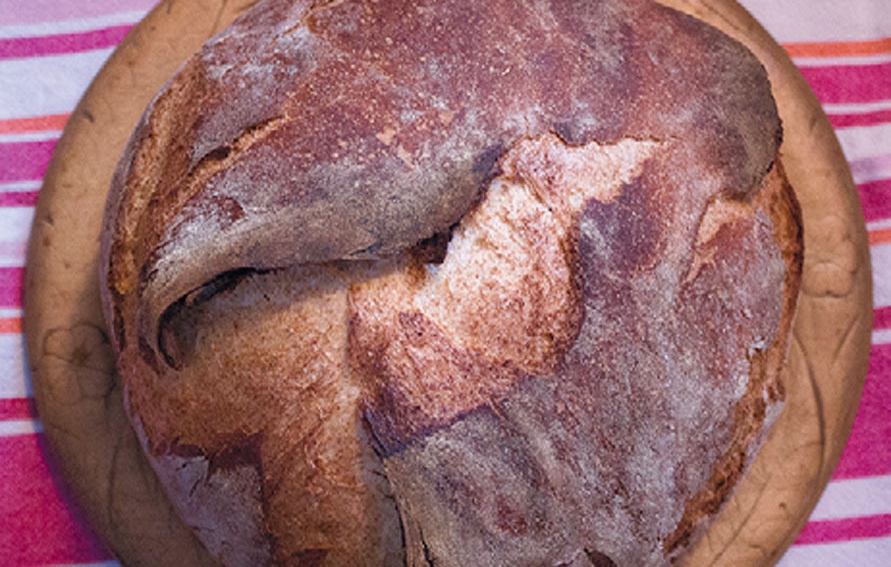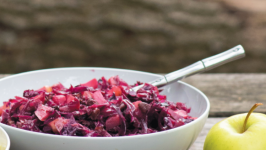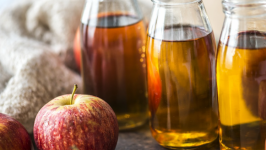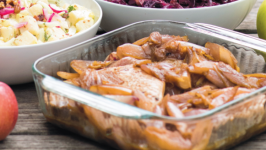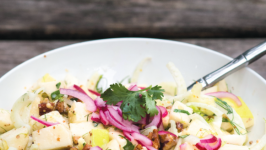Ingredients
- 3½ cups very warm (110–115°) water
- 2 tablespoons honey
- 1 teaspoon yeast
- 6 cups bread flour—3 cups whole wheat, 3 cups unbleached white
- 1 tablespoon salt
- cornmeal for pan
About this recipe
This recipe is loosely based on perhaps the most famous bread recipe of modern times. In 2006, Jim Lahey, artist and owner of Sullivan Street Bakery in Soho, had his bread recipe printed in the New York Times, and it became the most popular recipe ever published in that esteemed journal. Lahey was on all the shows and in all the books.
Touted as a “home-baking revolution,” his bread actually lives up to all the hype. First, it is easy. As in, no-knead, no fuss, no big deal whatsoever. Anyone can make this bread, and appear to be an artisanal baker of accomplishment. Second, it tastes fantastic. A perfect balance of crispy crust and flavorful crumb makes this an excellent loaf, right out of the oven, and the toast may be the best ever!
My variations include using half whole wheat and half unbleached white flours. You can try all the variations that you want, and almost all will come out well. I make this as a large loaf, using my five-quart red enamel Dutch oven. The loaf is huge! It ends up getting halved and then that half cut into the pieces we toast or eat.
The no-knead process is what makes this bread better than all the others. Lahey recommended an 18- to 24-hour rise, and I do think that is the secret of the great taste. I have seen recipes for this sort of bread that only rise for 12 hours, and that can certainly still work if you are short on time and need to throw the loaf in and get it baked. But, having tried a number of ways, I can say with some certainty that the 22- to 24-hour rise gives the proper amount of “souring” of the dough. I like to put the recipe together on a weeknight after work, then let it sit until the next night, when in 90 minutes I can have the most beautiful loaf for dinner, or a midnight snack.
Note on flour: I use only organic flours—white and whole wheat bread flours, and white all-purpose. There are now some delicious choices in Michigan- and locally-grown whole wheat bread flour which can be found at farmers’ markets and some area stores.
Note on yeast: I use dry yeast from the packages sold in stores. You can use other forms of yeast but it will change the rising times, and therefore the taste. Rapid rise yeasts are not recommended for these breads.
Preparation
Mixing Place the very warm water in a glass bowl and whisk in the honey until blended. Dump the yeast into this mixture, and let sit for 10–15 minutes to “proof,” or show signs of activity. Combine flours and salt in a very large bowl and stir with a sifter to blend and aerate. Add the yeast mixture and blend well, using a sturdy wooden or steel kitchen spoon. The mixture will be what bakers call “shaggy,” or loose and rugged looking.
Cover the bowl with a plastic bag or plastic wrap. This step is important for the fermentation of the dough, keeping the moisture in the mixture as the dough rises. Then cover this with a sturdy kitchen towel and set aside at room temperature for as close to 24 hours as you can.
Baking Preheat oven to 450°. Place your covered Dutch oven in the hot oven. [Note: At this heat, do not use any bakeware that has plastic knobs.] Set timer for 15 minutes. When timer goes off, plop the dough onto a flour-covered surface and knead ever so slightly to bring dough together. Shape into a round, smoothing and cupping the dough under to make a nice even surface over the top of the loaf. Cover with the towel and set the timer again for 15 minutes. Remove the hot pan from the oven and take off the lid. Throw a handful of cornmeal into the pan, attempting to cover most of the bottom. Take the rested loaf and drop it gently into the pan, cover, and return to oven. Set timer for 30 minutes.
When the timer goes off, remove the lid and set timer for another 30 minutes. When timer goes off, remove pan from oven and remove loaf from pan, setting aside to cool slightly before you cut it. Bread retains its structure better if it is left to cool a bit, but, this loaf can take cutting earlier than most.

